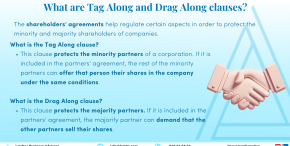
The derivation of tax liability is one of the figures used by the Tax Agency to achieve the collection of debts derived from taxes. In this post we tell you what is the derivation of liability, how it works, what is the difference between joint and several and subsidiary liability and what you can do if the Treasury claims you.
What is derivation of liability or succession?
Index of contents
The derivation of tax liability consists of the claim for payment of the tax debt by the Tax Authorities from those responsible as a result of the declaration of such liability.
The liability, in these cases, includes the tax debt demanded in the voluntary payment period, but not the surcharges or penalties.
Joint and several subsidiary liability are regulated in Article 41 of the General Tax Law, which establishes that:
- The law may establish other persons or entities as jointly and severally or subsidiarily liable for the tax debt, together with the principal debtor.
- Unless there is an express legal provision, the liability will always be subsidiary.
Difference between joint and several and subsidiary liability
As we have seen, taxpayers are liable for the debt when the principal debtor is not. These taxpayers may have joint and several or subsidiary liability.
Based on Article 42 of the General Tax Law, they are jointly and severally liable:
- Those who collaborate in the commission of the tax infringement.
- The co-owners
- The successor of a company
- Those who collaborate in the concealment or transfer of assets to avoid paying taxes.
- Those who collaborate in the lifting of seized assets.
On the other hand, Article 43 of the General Tax Law defines the persons who will be vicariously liable:
- The de facto or de jure administrators
- The insolvency administrators and liquidators of a company.
- Persons who purchase goods subject to the payment of tax debts
- Customs representatives
- Contractors and subcontractors
- Family members who own a company engaged in the same activity
In addition to the above, the regulations of certain taxes such as the Inheritance and Gift Tax, the Value Added Tax or the Real Estate Tax also regulate cases of derivation of tax liability.
What can you allege before a derivation of liability by the Tax Agency?
In the case of companies, the most frequent case of derivation of liability occurs when there is a company succession due to the purchase of one company by another. In order to avoid a derivation of tax liability, it is necessary to request from the seller of the company a certificate that certifies that there are no tax debts.
If you want to defend yourself against a case of derivation of liability, you have several options:
- First of all, act to prevent this type of assumptions. As we have seen, for example, if you buy a going concern, you must ensure that there are no tax debts. On the other hand, you can also analyze the circumstances of each case to avoid the requirements that give rise to the existence of the derivation of liability.
- Secondly, you will have to analyze all the documentation in order to be able to make allegations in relation to:
- The substantive grounds of the procedure to verify whether they may be null and void.
- The existence of a formal defect in the procedure or in any notification.
- The prescription of the debt or of the possibility of claiming the derivation of liability.
Procedure to demand joint and several liability
In order for the Tax Agency to demand joint and several liability, it must carry out an administrative act in which it must give a hearing to the interested party, then it must declare the liability and determine the scope of the liability.
The procedure for demanding joint and several liability is regulated in article 175 of the LGT, which establishes the following:
- In the event that the liability has been declared and notified to the responsible party at any time prior to the expiration of the voluntary payment period, a payment demand will be sufficient once this period has elapsed.
- In all other cases, once the voluntary payment period has expired, the competent body will issue an act of declaration of liability which will be notified to the responsible party.
Procedure to demand subsidiary liability
Once both the main debtor and the jointly and severally liable parties are declared bankrupt, the Tax Administration will issue an act declaring the liability, which will be notified to the jointly and severally liable party.
As you have seen, these are complex processes in which it is important to have the help of expert tax advisors to help you, on the one hand, to avoid situations in which a derivation of liability occurs and, on the other hand, to prepare and present allegations in the event that the administration determines joint and several or subsidiary liability.



